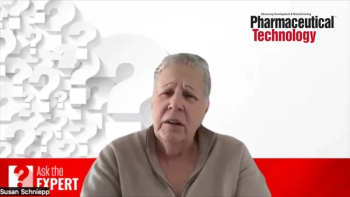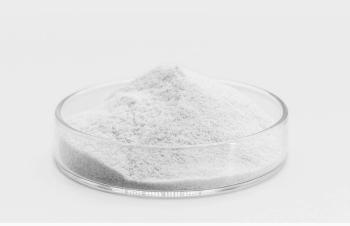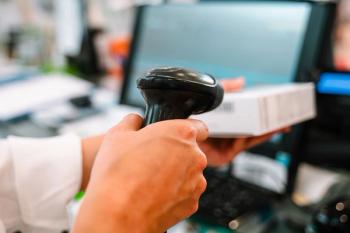
Equipment and Processing Report
- Equipment and Processing Report November 2021
- Volume 14
- Issue 11
Trends in Vial Labeling Equipment
New equipment meets needs for faster vial labeling and RFID for unit-level serialization.
Labeling equipment and materials continue to evolve with onboard serialization and inspection capabilities, adoption of radio frequency identification (RFID) technology, ever-improving performance and speed, and higher levels of connectivity that include remote access for troubleshooting, servicing, and training. Materials offer better performance as well as sustainability advantages.
Demand for labelers is strong for both new installations and line upgrades. “Labelers and Related Equipment” is among the top six categories of new equipment purchases for the pharmaceutical industry, according to a report published in November 2020 by PMMI, The Association for Packaging and Processing Technologies (1).
Forces driving purchases of labeling equipment include automation, growth in self-administration of medication and personalized pharmaceuticals, digitalized packaging that communicates directly to patients, the need for flexible production, and sustainability concerns (1).
According to the report, built-in connectivity is important, and remote troubleshooting is becoming a necessity. As requirements for traceability and serialization take hold, the need for efficient labeling operations grows. The report notes, “Facilities are increasingly leveraging the Internet of Things (IoT), connecting equipment with computers and devices to maximize productivity, control operations, and maintain quality. Companies are finding that they need these systems more within the serialization process, and this trend is expected to continue as more regulations get implemented and more tracking data is required throughout the supply chain” (1).
Vial labeling
Speed, accuracy, quick changeover, and flexibility are important attributes for labelers on today’s pharmaceutical packaging lines. Designed for COVID-19 vaccine packaging applications, the modular, servo-driven VR-72 labeler from WLS, a ProMach product brand, can run faster than 600 vials/min. The flexible, continuous-motion unit applies wraparound, pressure-sensitive film or paper labels to any cylindrical container and accommodates different code printing methods and inspection systems.
Products enter the labeler via a synchronized feedscrew and are held in place during label application by a vertical trunnion roller assembly for accurate, repeatable placement. A vacuum drum label dispenser holds each product at three contact points to minimize label skew. The continuous motion of the vacuum drum maintains tension on the label web to minimize web break and expand label and web material options. WLS’s patented label reconciler automatically tracks and removes out-of-tolerance labels from the vacuum drum before application. Options include redundant label heads to eliminate downtime and US Code of Federal Regulations (CFR) 21 Part 11 compliance with audit trail, domain authentication, and various types of data collection (2).
Maximizing speed and uptime for vaccine vial labeling is the goal behind an upgrade of the high-speed HERMA 132M HC wraparound labeler. Designed for efficiency, the wraparound labeler features digital position indicators and format sets that provide tool-less changeover and integrated control for the entire machine, including the camera and printer. The labeler now can operate continuously via retrofittable EasySplicer and EasyCutter modules, which make it possible to change or remove label and liner reels without stopping the machine and halting production, as shown in Figure 1. Considering that reels require replacement approximately every 10 minutes, the result is reduced downtime and significantly improved output.
The EasySplicer module arranges two label reels vertically, one above the other. The active label web is guided over a splicing table, where it is fixed at the end of the label web. Because the unit is equipped with a buffer, an operator can splice the new label web to the fixed web before the buffer runs out. Meanwhile, the EasyCutter module vacuums up the empty liner and chops it into shreds that are collected automatically and can be recycled. The add-on eliminates the need for manual removal of rewound backing paper (3).
RFID labels
As the deadline for unit-level serialization approaches, RFID is viewed as one way to carry data through the supply chain. RFID labels on vials, bottles, tubes, syringes, and devices can lock in select variable data while allowing other variable data to be updated through the life of the product. This technique simplifies inventory control and confirms product authenticity. However, applying RFID labels can be tricky. Label paths must be designed to prevent damage to tags or antennas to ensure readability for the life of the product. This challenge has been overcome, and pharmaceutical manufacturers have a growing number of equipment options so RFID labels can be adopted with minimal disruption.
For example, WLS offers three choices: RFID-Ready labelers, RFID-Enabled label application systems, and RFID-Ready print stands. RFID-Ready labelers apply pressure-sensitive labels with embedded RFID inlays. The RFID labels are read, written (encoded), locked or unlocked, verified, applied to the product, and re-verified as needed. Options include variable data printing with vision inspection, rejected label reconciliation, and rejected product removal.
RFID-Enabled label application systems consist of dual label heads that feed a single applicator. The first label head releases a standard pressure-sensitive label onto the vacuum drum while the second label head centers and releases an RFID tag onto the label, so the vacuum drum applies an integrated tag and label. Prior to being married with the label, the tags are read, written, locked or unlocked, and verified. Once applied, the RFID label can be re-verified.
RFID-Ready print stands are designed to digitally print pressure-sensitive labels embedded with RFID inlays, providing an off-line solution for incorporating RFID labels with variable data print-ing or whole-label printing. The offline, on-demand unit makes it possible to adopt RFID labeling without altering or upgrading existing labelers. The high-speed RFID-Ready print stands incorpo-rate full-label vision inspection with rejected label removal and verification and also verify the printed label and the encoded RFID tag (4).
References
1. PMMI, The Association for Packaging and Processing Technologies, “Pharmaceutical & Medical Devices Trends & Opportunities in Packaging Operations,” Report (November 2020).
2. WLS, “WLS Introduces VR-72 Labeler for COVID-19 Vaccine Packaging,” Press Release, Aug. 6, 2020.
3. HERMA, “HERMA US Introduces Continuous Labeling Capabilities for Premium Pharma Wraparound Labeler,” Press Release, March 9, 2021.
4. WLS, “WLS Introduces RFID Labeling Solutions,” Press Release, July 15, 2021.
Articles in this issue
about 4 years ago
Equipment Innovations for Pharma ManufacturingNewsletter
Get the essential updates shaping the future of pharma manufacturing and compliance—subscribe today to Pharmaceutical Technology and never miss a breakthrough.




